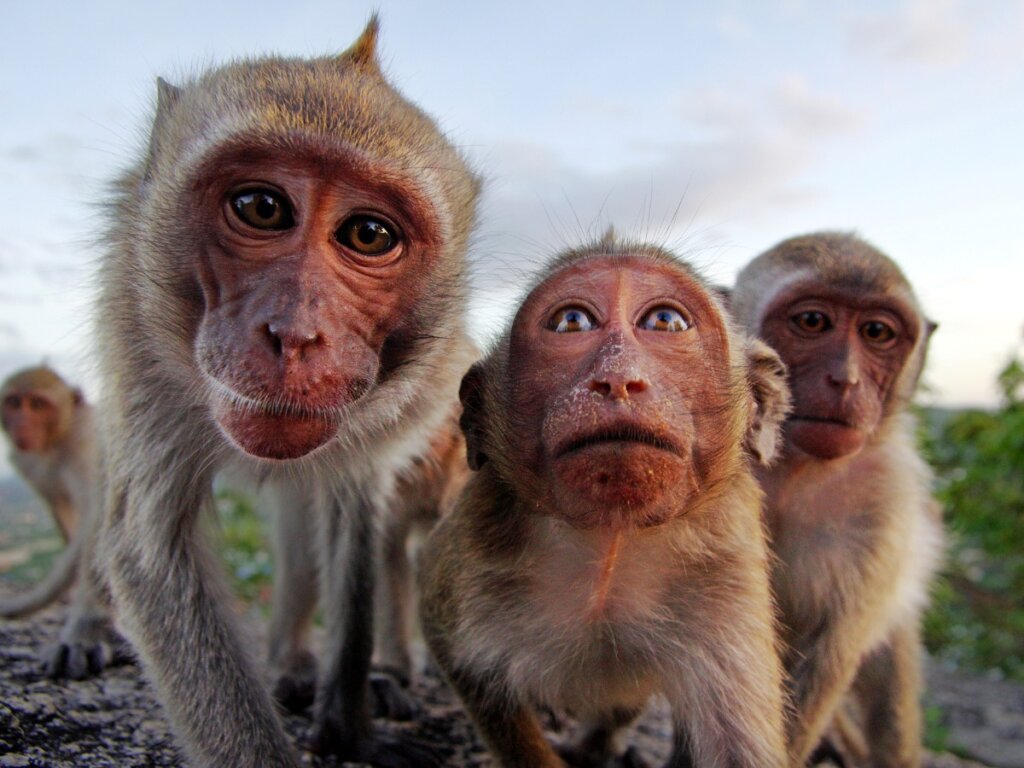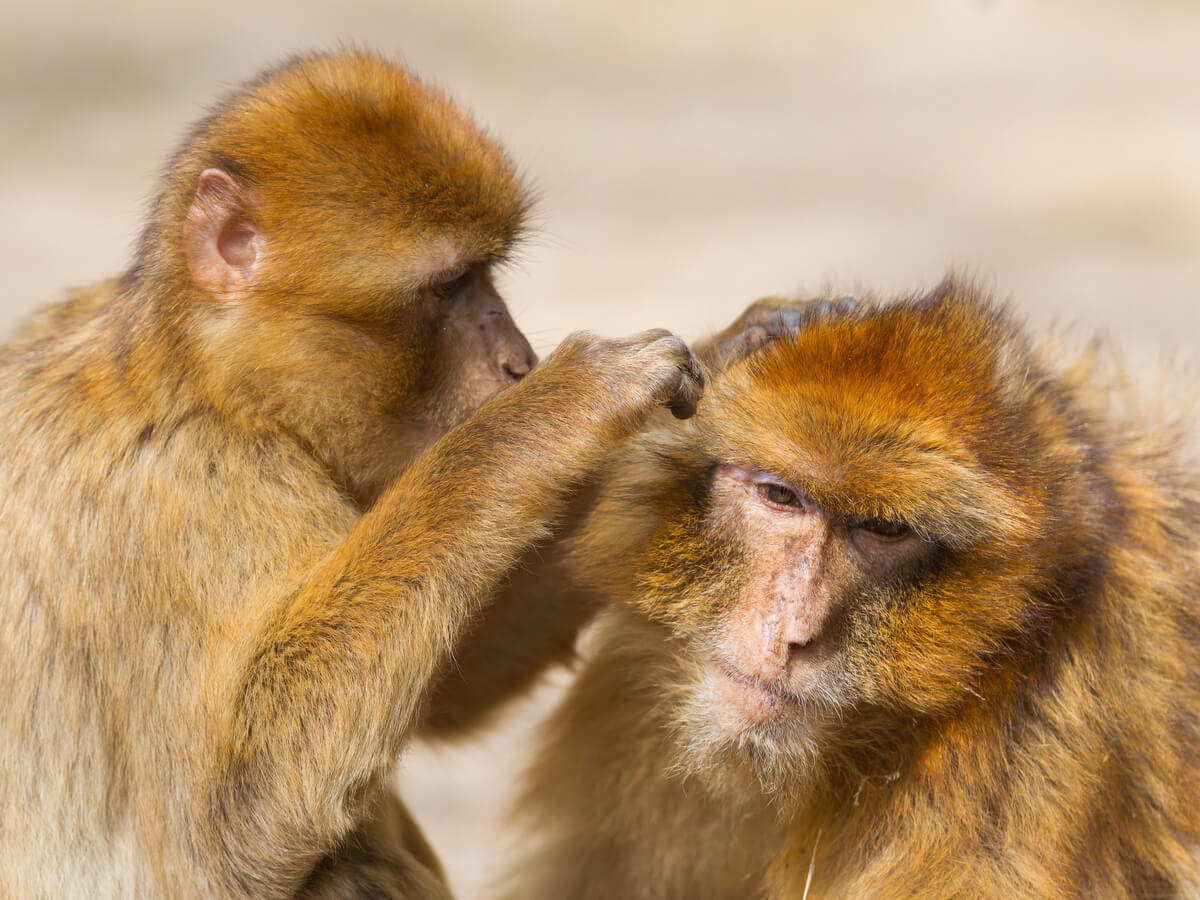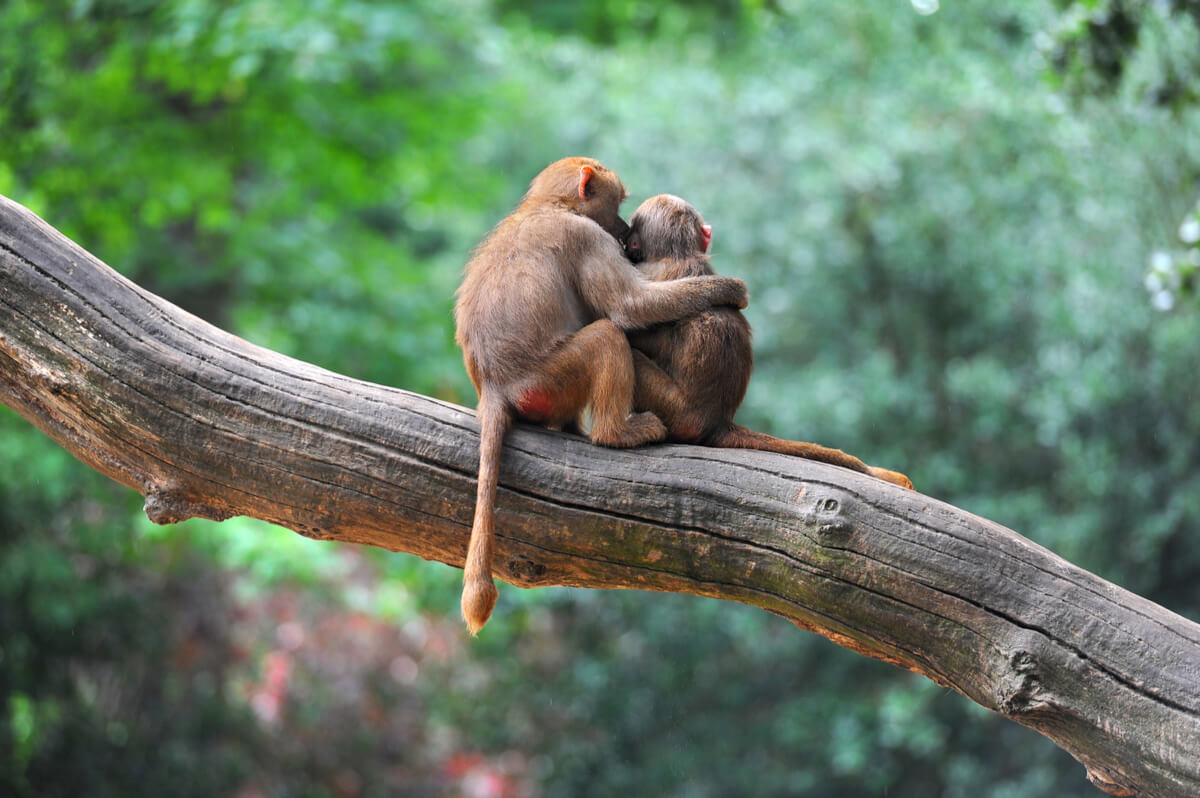All About the Behavior of Primates

Primates are a vast order of placental mammals currently divided into 2 suborders: strepsirrhines and haplorhines. Because of this, it’s difficult to bring together the behavior of primates in a single article, as each of the more than 200 species in this group displays complex and unique behavior.
However, what all primates do have in common is having 5 fingers and toes, being plantigrade, having opposable thumbs and limbs adapted to jumping, and the ability to move from tree to tree with their arms, called brachiation. From these characteristics, a series of behaviors of primates can be generalized.
The social behavior of primates
The behavior of most species of primates is gregarious. For this reason, there are common social patterns in their behavior, such as grooming, cooperation, the establishment of hierarchies, and affiliation.
The advantages of social networks within the groups of these mammals are based on defending the territory and the ability to respond to predators, as well as optimizing the search for resources. However, internal competition is sometimes a great disadvantage for individuals lower in the hierarchy.
Social beings are the way they are, because, at an evolutionary level, this strategy favors the permanence of the species.
Affective ties
The social character of primates, together with their great cognitive capacity, creates a complex network of interactions within groups. Although, with exceptions, the configuration of the hierarchies is usually patriarchal, females have their own system of organization. This intertwines with that of the males, sometimes placing them above some of them.
Males from patriarchal groups usually take care of the defense of the group, but in matriarchal species the dominant female plays a role of guide and reference.
In general, each member of the group has a role depending on sex, age, and rank. Affiliation and cooperation are favored by family relationships. In this way, related individuals are more likely to work together and show behavior such as physical proximity, grooming or sharing resources.

Territoriality in the behavior of primates
Territoriality isn’t only found between communities of primates and other animals, but also within the group. The approach-distance behaviors usually have to do with the conflicts that are generated with the proximity of the specimens when choosing the best places to nest, rest or feed.
Competition and aggressiveness
When the individuals of a group of primates have the same objectives and these cannot be fulfilled for all of them, it’s common to see conflicts over competition. This type of confrontation, however, doesn’t always lead to aggression, since primates tend to resort to forms of warning and intimidation beforehand.
The conflict plays a fundamental role in the behavior of primates, because through its appearance and resolution, hierarchies and alliances are configured. They’re necessary and natural interactions in their socialization.
Humans are much more numerous and we have social resources that help us to have an almost total absence of conflict, so we tend to give this concept a much more negative tint and apply it to other species.
Physical aggression occurs when social rules among primates are repeatedly broken and don’t diminish with the warnings of the other members of the group. Some of the warning behaviors common to all primate species are vocalizations, showing their teeth, shaking branches, or pushing.
Conflicts and assaults, however, are often followed by reconciling behaviors, such as hugging or grooming. In this way, differences between individuals can be resolved calmly without breaking the unity of the group.
Use of primate tools
There are many signs of the existence of advanced intelligence in primates: encephalization quotient, culture, prolonged childhood and, of course, the use of tools. Primates don’t only use tools to make life easier for themselves, they even make them.
Chimpanzees, before putting a twig in the termite mounds to remove these insects, prepare it by removing the leaves, bark and pieces that may get in the way.
Not only is “stick” behavior found in primates. Gorillas (Gorilla gorilla) and orangutans (Pongo pigmaeus) use large leaves as umbrellas when it rains. Other species select and use rocks to open the shell of the fruit (or as a weapon).
The manufacture and use of tools requires certain cognitive processes of problem-solving, creativity, and learning. The strategies sometimes overlap. These mammals don’t limit themselves to trial and error, but actively reflect before acting and even arrive at solutions through insight – the internalization of what they have learned.
Behavior in captivity
Studies on the behavior of primates began with researchers Jane Goodall, Dian Fossey, and Biruté Galdikas. These three women dedicated their lives to documenting the behavior of great primates in the wild. However, most of the studies were carried out in captivity using their finding.
In general, under confinement conditions, it has been observed that hierarchies are much more lax, in addition to a higher incidence of aggression and conflicts. Competitiveness for resources, even if they’re provided in sufficient quantities for everyone, increases considerably.
In addition, primates suffer stress when they’re captive, as they’re aware of their confinement. Stereotypes, self-harm, and anxiety and depression disorders are also common in these living conditions. Due to the lowering of defenses derived from stress, there’s also a higher incidence of parasites and diseases.

Truly complex animals
To give you an idea of how complex these mammals are, a few years ago the legal figure of a non-human person was created. Due to their intelligence and emotional traits that are similar to humans, this recognizes their right to life, freedom, and not to be physically or psychologically abused.
Although, at first glance, they don’t seem to have a very close behavior to ours, when you dig deeper you can see that there aren’t so many things that separate us. Some examples are spoken language and the level of development of the culture. They are valuable as special living beings, and everyone who has spent time studying them agrees.
All cited sources were thoroughly reviewed by our team to ensure their quality, reliability, currency, and validity. The bibliography of this article was considered reliable and of academic or scientific accuracy.
- Piñeros, S. A. S. (2017). LAS PERSONAS NO HUMANAS COMO SUJETOS DE DERECHOS. Cuadernos de Derecho Público, (6), 33-46.
- Fossey, D. (2000). Gorillas in the Mist. Houghton Mifflin Harcourt.
- Montgomery, S. (2009). Walking with the Great Apes: Jane Goodall, Dian Fossey, Biruté Galdikas. Chelsea Green Publishing.
- Westergaard, G. C., & Suomi, S. J. (1995). The production and use of digging tools by monkeys: A nonhuman primate model of a hominid subsistence activity. Journal of anthropological research, 51(1), 1-8.
- Sussman, R. W., Garber, P. A., & Cheverud, J. M. (2005). Importance of cooperation and affiliation in the evolution of primate sociality. American journal of physical anthropology, 128(1), 84-97.